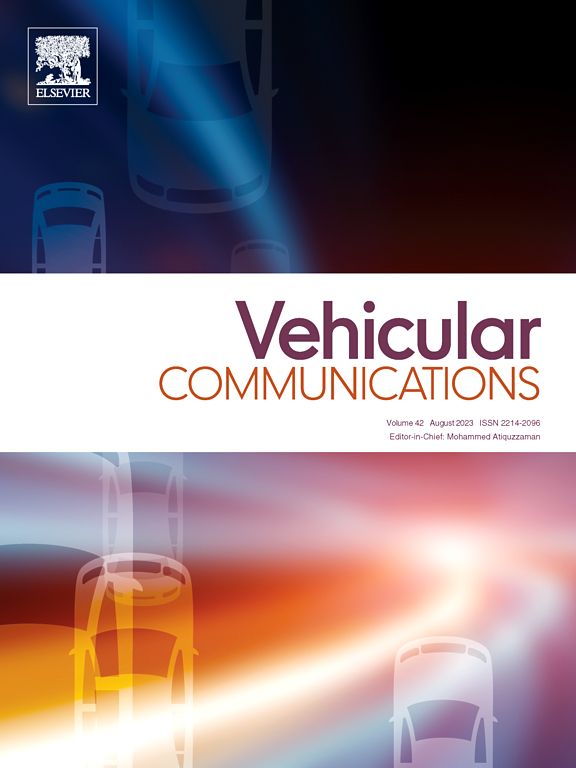UAV-assisted wireless communications in the 6G-and-beyond era: An extensive survey on characteristics, standardization and regulations, enabling technologies, challenges, and future directions
IF 6.5
2区 计算机科学
Q1 TELECOMMUNICATIONS
引用次数: 0
Abstract
Unmanned Aerial Vehicles (UAVs) have emerged as transformative tools in wireless communication systems, revolutionizing the landscape of next-generation networks, including 6G and beyond. This survey comprehensively examines the technical advancements, challenges, and future directions of UAV-assisted wireless communications. It begins with analyzing UAV characteristics, such as flight dynamics, payload capacity, and power systems, and explores their pivotal role in enabling efficient connectivity across terrestrial, aerial, and maritime domains. The survey then delves into enabling technologies like advanced antenna designs, beamforming techniques, channel modeling, energy consumption models, and mobility optimization, emphasizing their necessity for achieving seamless UAV-to-ground, UAV-to-UAV, and UAV-to-satellite interactions. It further discusses regulatory frameworks and standardization efforts by global entities to address safety, spectrum allocation, and privacy concerns. Innovative routing protocols, including AI-driven and software-defined networking approaches, are analyzed, highlighting their potential to enhance scalability, reduce latency, and optimize resource management in dynamic UAV networks. This work identifies significant challenges such as energy efficiency, secure communication in hostile environments, and trajectory optimization while navigating complex three-dimensional (3D) spaces. The survey finally proposes directions for future research, including the exploration of sub-THz and THz communication, cross-layer routing, and the integration of UAVs with emerging networking paradigms. By synthesizing lessons learned and outlining unresolved questions, this paper serves as a resource for advancing UAV-enabled connectivity and unlocking new capabilities for ubiquitous and resilient wireless networks.
6g及以上时代的无人机辅助无线通信:对特征、标准化和法规、使能技术、挑战和未来方向的广泛调查
无人驾驶飞行器(uav)已经成为无线通信系统中的变革性工具,彻底改变了下一代网络的格局,包括6G及以后。这项调查全面考察了无人机辅助无线通信的技术进步、挑战和未来方向。它首先分析无人机的特性,如飞行动力学、有效载荷能力和动力系统,并探索它们在实现陆地、空中和海洋领域的有效连接方面的关键作用。然后,调查深入研究了先进的天线设计、波束成形技术、信道建模、能耗模型和机动性优化等使能技术,强调了实现无人机对地、无人机对无人机以及无人机对卫星无缝交互的必要性。它进一步讨论了全球实体为解决安全、频谱分配和隐私问题而开展的监管框架和标准化工作。分析了创新的路由协议,包括人工智能驱动和软件定义的网络方法,强调了它们在动态无人机网络中增强可扩展性、减少延迟和优化资源管理方面的潜力。这项工作确定了重大挑战,如能源效率、恶劣环境下的安全通信以及导航复杂三维空间时的轨迹优化。调查最后提出了未来的研究方向,包括探索亚太赫兹和太赫兹通信,跨层路由以及无人机与新兴网络范式的集成。通过综合经验教训和概述未解决的问题,本文可以作为推进无人机连接和释放无处不在的弹性无线网络新功能的资源。
本文章由计算机程序翻译,如有差异,请以英文原文为准。
求助全文
约1分钟内获得全文
求助全文
来源期刊

Vehicular Communications
Engineering-Electrical and Electronic Engineering
CiteScore
12.70
自引率
10.40%
发文量
88
审稿时长
62 days
期刊介绍:
Vehicular communications is a growing area of communications between vehicles and including roadside communication infrastructure. Advances in wireless communications are making possible sharing of information through real time communications between vehicles and infrastructure. This has led to applications to increase safety of vehicles and communication between passengers and the Internet. Standardization efforts on vehicular communication are also underway to make vehicular transportation safer, greener and easier.
The aim of the journal is to publish high quality peer–reviewed papers in the area of vehicular communications. The scope encompasses all types of communications involving vehicles, including vehicle–to–vehicle and vehicle–to–infrastructure. The scope includes (but not limited to) the following topics related to vehicular communications:
Vehicle to vehicle and vehicle to infrastructure communications
Channel modelling, modulating and coding
Congestion Control and scalability issues
Protocol design, testing and verification
Routing in vehicular networks
Security issues and countermeasures
Deployment and field testing
Reducing energy consumption and enhancing safety of vehicles
Wireless in–car networks
Data collection and dissemination methods
Mobility and handover issues
Safety and driver assistance applications
UAV
Underwater communications
Autonomous cooperative driving
Social networks
Internet of vehicles
Standardization of protocols.
 求助内容:
求助内容: 应助结果提醒方式:
应助结果提醒方式:


